#punjab governor
Explore tagged Tumblr posts
Text
Discover Chharabra: A Scenic Area Near Shimla with Heritage and Beauty
#Chharabra#Chharabra’s ecological importance#Christ Church#Himachal Pradesh#Hindustan-Tibet Road#Jakhoo Temple#kufri#mall road#Mountain Village Near Shimla#national highway 22#President of India’s summer retreat#Shimla#Shimla Reserve Forest Sanctuary#The Governor of Punjab’s Summer Residence#The Summer Retreat of the President of India
0 notes
Text
President Revamps Governance with Six New Appointments and Three Reshuffles.

New Delhi: According to a press release from Rashtrapati Bhavan, President Droupadi Murmu has announced several new governor appointments and reshuffles.
ALSO READ MORE- https://apacnewsnetwork.com/2024/07/president-revamps-governance-with-six-new-appointments-and-three-reshuffles/
#Assam congressman Ramen Dek#CH Vijayashankar#CP Radhakrishnan#CP Radhakrishnan new governor of Maharashtra#elangana governore#langana's new governor#governor of Assam#governor of Jharkhand#governor of Maharashtra#governor of Punjab#Gulab Chand Kataria#Gulab Chand Kataria governor of Punjab#Gulab Chand Kataria the governor of Punjab#Haribhau Kisanrao Bagde#IAS officer K Kailashnathan#IAS officer K Kailashnathan Lieutenant Governor#Lakshman Prasad Acharya#Lakshman Prasad Acharya governor of Assam#Lakshman Prasad Acharya the governor of Assam#Lieutenant Governor#Lok Sabha MP from Mysore in Karnataka#new governor appointments#new governor of Jharkhand#new governor of Maharashtra#Rajasthan governor#Rajasthan governor Kalraj Mishra#Tripura deputy chief minister Jishnu Dev Varma#Union minister Santosh Kumar Gangwar#Union Territory of Puducherry
0 notes
Text
मनोहर लाल खट्टर ने विधायकी से दिया इस्तीफा, भाजपा बना सकती है पंजाब का गवर्नर
मनोहर लाल खट्टर ने विधायकी से दिया इस्तीफा, भाजपा बना सकती है पंजाब का गवर्नर
Manohar Lal Khattar Resign: हरियाणा के पूर्व मुख्यमंत्री मनोहर लाल अपने विधानसभा सदस्यता से इस्तीफा दे दिया है। वह करनाल विधानसभा सीट से विधायक थे। सूत्रों के हवाले से जानकारी मिली है कि उन्हें भाजपा हाई कमान पंजाब का नया गवर्नर बना सकता है। मनोहर लाल विधायक रहते राज्यपाल नहीं बन सकते थे, इस��िए उन्होंने इस्तीफा दिया है। अगर भाजपा ने यह दांव खेला तो इस से पंजाब की आम आदमी पार्टी सरकार की टेंशन…

View On WordPress
0 notes
Text
was thinking about this

To be in "public", you must be a consumer. Or a laborer.
About control of peoples' movement in space/place. Since the beginning.
"Vagrancy" of 1830s-onward Britain, people criminalized for being outside without being a laborer.
Breaking laws resulted in being sentenced to coerced debtor/convict labor. Coinciding with the 1830-ish climax of the Industrial Revolution and the land enclosure acts, the "Workhouse Act" aka "Poor Law Amendment Act of 1834" forced poor people to work for a minimum number of hours every day. The major expansion of the "Vagrancy Act" of 1838 made "joblessness" a crime and enhanced its punishment. (Coincidentally, the law's date of royal assent was 27 July 1838, just 5 days before the British government was scheduled to allow fuller emancipation of its technical legal abolition of slavery in the British Caribbean on 1 August 1838.)
---
"Vagrancy" of 1860s-onward United States, people criminalized for being outside while Black.
Widespread emancipation after slavery abolition in 1865 rapidly followed by the outlawing of loitering which de facto outlawed existing as Black in public. Inability to afford fines results in being sentenced to forced labor by working on chain gangs or prisons farms, some built atop plantations.
---
"Vagrancy" of 1870s-onward across empires, people criminalized for being outside while being "foreign" and also being poor generally.
Especially from 1880-ish to 1918-ish, this was an age of widespread mass movement of peoples due to mass poverty and famine induced by global colonial extraction and "market expansion", as agricultural "revolutions" of monoculture/cash crop extraction resulted in ecological degradation. This coincides with and is facilitated by new railroads and telegraphs, leading to imperial implementation or expansion of identity documents, strict work contracts, passports, immigration surveillance, and border checkpoints.
All of this in just a few short years: In 1877, British administrators in India develop what would become the Henry Classification System of taking and keeping fingerprints for use in binding colonial Indians to legal contracts. That same year during the 1877 Great Railroad Strike, and in response to white anxiety about Black residents coming to the city during Great Migration, Chicago's policing institutions exponentially expand surveillance and pioneer "intelligence card" registers for tracking labor union organizing and Black movement, as Chicago's experiments become adopted by US military and expanded nationwide, later used by US forces monitoring dissent in colonial Philippines and Cuba. Japan based its 1880 Penal Code anti-vagrancy statutes on French models, and introduced "koseki" register to track poor/vagrant domestic citizens as Tokyo's Governor Matsuda segregates classes, and the nation introduces "modern police forces". In 1882, the United States passes the Chinese Exclusion Act. In 1884, the Ottoman government enacts major "Passport Nizamnamesi" legislation requiring passports. In 1885, during the "Tacoma riot" or "expulsion", a mob of hundreds of white residents rounded up all of the city's Chinese residents, marched them to the train station, kicked them out of the city, and burned down the Chinese neighborhood, introducing what is called "the Tacoma method".
Punished for being Chinese in San Francisco. Punished for being Korean in Japan. Punished for crossing Ottoman borders without correct paperwork. Arrested for whatever, then sent to do convict labor. A poor person in the Punjab, starving during a catastrophic famine, might be coerced into a work contract by British authorities. They will have to travel, shipped off to build a railroad in British Kenya. But now they have to work. Now they are bound. They will be punished for being Punjabi and trying to walk away from Britain's tea plantations in Assam or Britain's rubber plantations in Malaya.
---
"Vagrancy" amidst all of this, people also criminalized for being outside while "unsightly" and merely even superficially appearing to be poor. San Francisco introduced the notorious "ugly law" in 1867, making it illegal for "any person, who is diseased, maimed, mutilated or deformed in any way, so as to be an unsightly or disgusting object, to expose himself or herself to public view". Today, if you walk into a building looking a little "weird" (poor, Black, ill, disabled, etc.) or carrying a small backpack, you are given seething spiteful glares and asked to leave.
"Vagrancy" everywhere in the United States, a combination of all of the above. De facto criminalized for simply going for a stroll without downloading the coffee shop's exclusive menu app. "Vagrancy", since at least early nineteenth century Europe. About the control of movement through and access to space/place. Concretizing and weaponizing caste, corralling people, anchoring them in place (de facto confinement), extracting their wealth/labor.
You are permitted to exist only as a paying customer or an employee.
#get to work or else you will be put to work#sorry#intimacies of four continents#tidalectics#abolition
2K notes
·
View notes
Text
गैंगस्टर लॉरेंस को पकड़ा, शेरा खुब्बन का एनकाउंटर किया, लोग कारण पूछ रहे | Punjab Chief Minister Bhagwant Mann letter to Governor Banwari Lal Purohit on repatriation of SSP Kuldeep Singh Chehal latest news
गैंगस्टर लॉरेंस को पकड़ा, शेरा खुब्बन का एनकाउंटर किया, लोग कारण पूछ रहे | Punjab Chief Minister Bhagwant Mann letter to Governor Banwari Lal Purohit on repatriation of SSP Kuldeep Singh Chehal latest news
Hindi News Local Chandigarh Punjab Chief Minister Bhagwant Mann Letter To Governor Banwari Lal Purohit On Repatriation Of SSP Kuldeep Singh Chehal Latest News चंडीगढ़2 घंटे पहले कॉपी लिंक चंडीगढ़ के पूर्व SSP कुलदीप सिंह चहल को समय से पहले मूल कैडर में वापस भेजने यानी रिपेट्रिएट करने के चंडीगढ़ प्रशासन के आदेशों पर सियायत गर्मा रही है। वहीं सोशल मीडिया पर भी सवाल उठ रहे हैं। चंडीगढ़ प्रशासन ने…

View On WordPress
#Chandigarh Bhaskar News#Chandigarh Breaking News#Chandigarh Latest News#Chandigarh SSP Kuldeep Singh Chehal#Governor Banwari Lal Purohit#Punjab CM Bhagwant Mann#SSP Latest News
0 notes
Photo
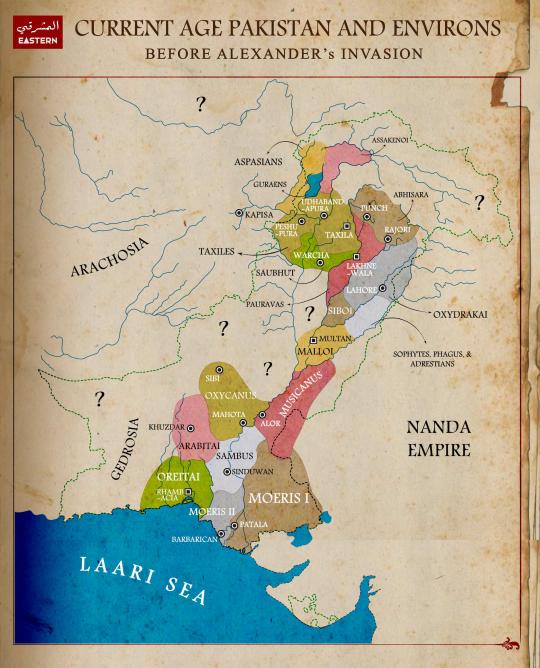
Regions of Current Age Pakistan before Invasion of Alexander
Alexander the Great's military campaigns in the Indus Valley (modern-day Pakistan) involved significant engagements with local territories, kingdoms, and their rulers. In 329 B.C., Alexander conquered Qandhar and encountered Indian tribes for the first time, marking the beginning of his interactions with the complex political landscape of the area. By 327 B.C., he had crossed the Hindukush Mountains, capturing key fortifications such as Astes Fort and massacring 7000 Indians at Massaga of Assakenians. His conquest continued with the siege and capture of Aornos in December of the same year.
During his campaigns, Alexander encountered various powerful entities in the region. The Buddhists, particularly in Sind, were influential, with prominent temples in Multan and Alore. Despite the power of the Buddhist monks, the Brahmins played a significant role in resisting Greek advances, inciting rebellion among local rulers such as Sambus. This resistance led to notable conflicts, including the defeat of Poros in 326 B.C. and the collapse of the Mallians in 325 B.C. The Greek conqueror’s interactions with these local powers highlight the complex and multi-faceted nature of the region's political dynamics.
Alexander's campaign in the southern Punjab in 326 B.C. was marked by the defeat of the Malli and Oxydraki principalities, followed by the liberation of the rivers Hydaspes, Acesines, and Indus. His naval fleet, consisting of 2000 warships, played a crucial role in these operations. The submission of Musicanus, the chief of upper Sind, who paid homage to Alexander to avoid destruction, further exemplifies the mix of military might and diplomatic engagements that characterized Alexander's approach. The appointment of Peithon as the Governor of Sind and the dispatch of Krateros with an army via Bolan Pass were strategic moves to consolidate Greek control over the region.
The period following Alexander's departure saw significant turmoil. In 325 B.C., revolts in Patala and other regions, such as the rebellion of Sambus and Musicanus, were brutally suppressed. Alexander's forces, led by his generals, employed severe measures, including mass executions and enslavement, to quell these uprisings. The death of Philippus, the Satrap of Upper Sindhu Valley, due to internal jealousy among Greeks and Macedonians, underscores the tensions within Alexander’s administration. These events reveal the fragile nature of Greek control and the persistent resistance from local rulers and populations.
Alexander's death in 323 B.C. marked a turning point, as his empire was divided among his generals. Despite the fragmentation of his empire, Sind continued to be governed by Peithon, reflecting the lasting impact of Alexander's conquests on the region. The strategic and administrative decisions made during his campaigns had enduring effects, shaping the political landscape of Sind and its neighboring territories. Alexander's legacy in these regions is a testament to the complex interplay of military conquest, local resistance, and administrative governance that defined his rule.
101 notes
·
View notes
Photo

On this day, 13 March 1940, Indian revolutionary Udham Singh assassinated former lieutenant governor of the Punjab, Michael O'Dwyer, at a meeting in London. The assassination was in revenge for the 1919 Jallianwala Bagh massacre when O'Dwyer dispatched troops to attack a peaceful protest, resulting in around 1,800 people being killed and over 1,200 wounded. O'Dwyer referred to the events as a "correct action". While in custody, Singh called himself "Ram Mohammad Singh Azad": the first three words of the name reflect the three major religions of Punjab (Hindu, Muslim, and Sikh), while the last, "azad", means "free". Convicted of murder, Singh was sentenced to death. Speaking at his trial, Singh explained: "He deserved it. He was the real culprit. He wanted to crush the spirit of my people, so I have crushed him. For full 21 years, I have been trying to seek vengeance. I am happy that I have done the job." More: https://stories.workingclasshistory.com/article/8498/udham-singh-attentat https://www.facebook.com/workingclasshistory/photos/a.1819457841572691/2229544330564038/?type=3
248 notes
·
View notes
Text


To The Punjab Governor
Sir, With due respect we beg to bring to your kind notice the following:
That we were sentenced to death on 7th October 1930 by a British Court, L.C.C Tribunal, constituted under the Sp. Lahore Conspiracy Case Ordinance, promulgated by the H.E. The Viceroy, the Head of the British Government of India, and that the main charge against us was that of having waged war against H.M. King George, the King of England.
The above-mentioned finding of the Court pre-supposed two things:
Firstly, that there exists a state of war between the British Nation and the Indian Nation and, secondly, that we had actually participated in that war and were therefore war prisoners.
The second pre-supposition seems to be a little bit flattering, but nevertheless it is too tempting to resist the desire of acquiescing in it.
As regards the first, we are constrained to go into some detail. Apparently there seems to be no such war as the phrase indicates. Nevertheless, please allow us to accept the validity of the pre-supposition taking it at its face value. But in order to be correctly understood we must explain it further. Let us declare that the state of war does exist and shall exist so long as the Indian toiling masses and the natural resources are being exploited by a handful of parasites. They may be purely British Capitalist or mixed British and Indian or even purely Indian. They may be carrying on their insidious exploitation through mixed or even on purely Indian bureaucratic apparatus. All these things make no difference. No matter, if your Government tries and succeeds in winning over the leaders of the upper strata of the Indian Society through petty concessions and compromises and thereby cause a temporary demoralization in the main body of the forces. No matter, if once again the vanguard of the Indian movement, the Revolutionary Party, finds itself deserted in the thick of the war. No matter if the leaders to whom personally we are much indebted for the sympathy and feelings they expressed for us, but nevertheless we cannot overlook the fact that they did become so callous as to ignore and not to make a mention in the peace negotiation of even the homeless, friendless and penniless of female workers who are alleged to be belonging to the vanguard and whom the leaders consider to be enemies of their utopian non-violent cult which has already become a thing of the past; the heroines who had ungrudgingly sacrificed or offered for sacrifice their husbands, brothers, and all that were nearest and dearest to them, including themselves, whom your government has declared to be outlaws. No matter, it your agents stoop so low as to fabricate baseless calumnies against their spotless characters to damage their and their party’s reputation. The war shall continue.
It may assume different shapes at different times. It may become now open, now hidden, now purely agitational, now fierce life and death struggle. The choice of the course, whether bloody or comparatively peaceful, which it should adopt rests with you. Choose whichever you like. But that war shall be incessantly waged without taking into consideration the petty (illegible) and the meaningless ethical ideologies. It shall be waged ever with new vigour, greater audacity and unflinching determination till the Socialist Republic is established and the present social order is completely replaced by a new social order, based on social prosperity and thus every sort of exploitation is put an end to and the humanity is ushered into the era of genuine and permanent peace. In the very near future the final battle shall be fought and final settlement arrived at.
The days of capitalist and imperialist exploitation are numbered. The war neither began with us nor is it going to end with our lives. It is the inevitable consequence of the historic events and the existing environments. Our humble sacrifices shall be only a link in the chain that has very accurately been beautified by the unparalleled sacrifice of Mr. Das and most tragic but noblest sacrifice of Comrade Bhagawati Charan and the glorious death of our dear warrior Azad.
As to the question of our fates, please allow us to say that when you have decided to put us to death, you will certainly do it. You have got the power in your hands and the power is the greatest justification in this world. We know that the maxim “Might is right” serves as your guiding motto. The whole of our trial was just a proof of that. We wanted to point out that according to the verdict of your court we had waged war and were therefore war prisoners. And we claim to be treated as such, i.e., we claim to be shot dead instead of to be hanged. It rests with you to prove that you really meant what your court has said.
We request and hope that you will very kindly order the military department to send its detachment to perform our execution.
Yours
BHAGAT SINGH
#bhagat singh#india#desiblr#freedom fighters#desi#community building#practical anarchy#practical anarchism#anarchist society#practical#revolution#anarchism#daily posts#communism#anti capitalist#anti capitalism#late stage capitalism#organization#grassroots#grass roots#anarchists#libraries#leftism#social issues#economy#economics#climate change#climate crisis#climate#ecology
10 notes
·
View notes
Text



❥ PAKISTAN TOUR : DAY IV - 17 OCTOBER 2019
The Duke and Duchess of Cambridge visited the cultural capital of Pakistan - Lahore on their fourth day in the city.
William and Catherine called in to meet the Governor of Punjab at his official residence as their first engagement of the day. They then visited SOS Children's Villages Pakistan and played cricket at the National Cricket Academy.
Afterwards, the Duke and Duchess visited the historical Badshahi Mosque and attended an interfaith meeting. For their final engagement of the day, they visited the Shaukat Khanum Memorial Cancer Hospital and Research Centre and spent time with the families and patients receiving treatment there.
#pakistan tour 19#princess of wales#the princess of wales#princess catherine#cat cambridge#princess kate#prince of wales#the prince of wales#prince william#will cambridge#british royals#british royal family#royals#royalty#brf#royal#kate middleton#catherine middleton#duchess of cambridge#british royalty#17102019#Pakistan19#day 4 pakistan tour 19#tour recap : pakistan 19#tour recap#my edit#royaltyedit#royalty edit
35 notes
·
View notes
Text
India archive reveals extent of ‘colonial loot’ in royal jewellery collection
File from India Office archive details how priceless items were extracted from colony as trophies of conquest
by David Pegg and Manisha Ganguly
Published: 14:00 Thursday, 06 April 2023
Five years ago, Buckingham Palace marked its summer opening with an exhibition celebrating the then Prince Charles’s 70th birthday with a display of his favourite pieces from the royal collection, Britain’s official trove of items connected to the monarchy. “The prince had a very, very strong hand in the selection,” the senior curator said.
Among the sculptures, paintings and other exhibits was a long gold girdle inlaid with 19 large emeralds once used by an Indian maharajah to decorate his horses. It was a curious choice to put into the exhibition in light of the violent means by which it had come into the hands of the royal family.

Emerald girdle of Maharaja Sher Singh, c 1840. Photograph: Royal Collection Trust / © His Majesty King Charles III 2023
As part of its Cost of the crown series, the Guardian has uncovered a remarkable 46-page file in the archives of the India Office, the government department that was responsible for Britain’s rule over the Indian subcontinent. It details an investigation, apparently commissioned by Queen Mary, the grandmother of Elizabeth II, into the imperial origins of her jewels.
The report, from 1912, explains how priceless pieces, including Charles’s emerald belt, were extracted from India as trophies of conquest and later given to Queen Victoria. The items described are now owned by the monarch as property of the British crown.
Plundered stones
To fully understand the context behind the jewels, and their place in India’s history, it was necessary to visit the archives.
A journal records a tour in 1837 of the Punjab area in north India by the society diarist Fanny Eden and her brother George, the governor general of the British Raj at the time. They visited Ranjit Singh, the maharajah in Lahore, who had signed a “treaty of friendship” with the British six years earlier.
The half-blind Singh wore few if any precious stones, Eden wrote in her journal, but his entourage was positively drowning in them. So plentiful were the maharajah’s gems that “he puts his very finest jewels on his horses, and the splendour of their harness and housings surpasses anything you can imagine,” she wrote. Eden later confided in her journal: “If ever we are allowed to plunder this kingdom, I shall go straight to their stables.”
Twelve years later, Singh’s youngest son and heir, Duleep, was forced to sign over the Punjab to the conquering forces of the British East India Company. As part of the conquest, the company did indeed plunder the horses’ emeralds, as well as Singh’s most precious stone, the legendary Koh-i-noor diamond.
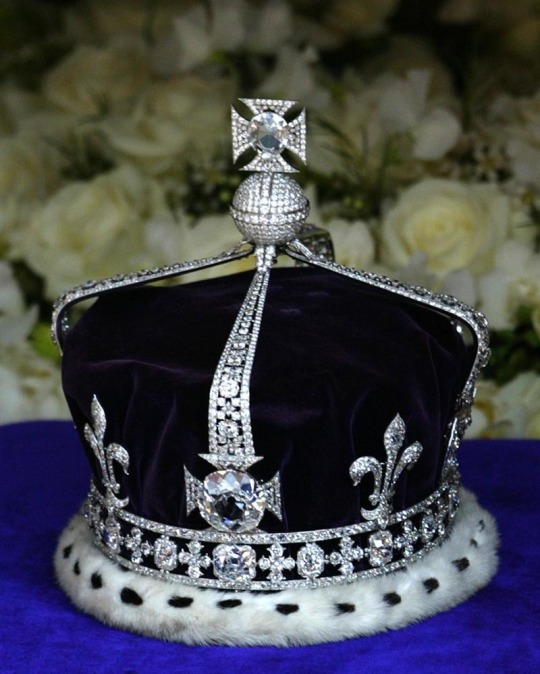
The queen mother’s crown sits on top of the coffin during her funeral in 2002. Photograph: Dan Chung/The Guardian
Today, the Koh-i-noor sits in the crown of Queen Elizabeth the Queen Mother, on display at the Tower of London, and it has become an emblem of Britain’s tortured relationship with its imperial history.
Anita Anand, a journalist and historian who co-wrote a book titled Koh-i-noor on the diamond, said it was “a beautiful and cold reminder of British supremacy during the Raj”, the period between 1858 and 1947 when India was ruled by the crown.
“Its facets reflect the fate of a boy king who was separated from his mother,” Anand said. The stone too was “taken far away from his home, recut and diminished”. Anand said: “That is not how India sees itself today.”
Buckingham Palace is plainly aware of the sensitivities surrounding looted artefacts. After the Indian government let it be known that for Camilla, the Queen Consort, to wear the Koh-i-noor at Charles’s coronation would elicit “painful memories of the colonial past”, the palace announced she would swap it for a less contentious diamond.
But, as was discovered by Queen Mary, the Koh-i-noor was not the only gem taken from Singh’s treasury to have found its way to the British monarchy.
Royal with a pearl necklace
Among the jewels identified in the document found by the Guardian is a “short necklace of four very large spinel rubies”, the largest of which is a 325.5-carat spinel that later came to be identified as the Timur ruby.
Its famous name is erroneous: research by the academic Susan Stronge in 1996 concluded it was probably never owned by Timur, a Mongol conquerer. And it is a spinel, a red stone similar to, but chemically distinct from, a ruby.
Elizabeth II was shown handling it in the 1969 BBC documentary Royal Family, and was clearly acquainted with the myths surrounding it. “The history, of course, is very fascinating. It belonged to so many kings of Persia and Mughal emperors, until Queen Victoria was sent it from India,” she observed.

The Timur ruby necklace, 1853. Photograph: Royal Collection Trust / © His Majesty King Charles III 2023
The queen was never pictured wearing the item. However, she may have worn another of the Lahore treasures, identified in the India Office report as “a pearl necklace consisting of 224 large pearls”.
In her 1987 study of royal jewellery, Leslie Field described “one of the Queen Mother’s most impressive two-row pearl necklaces … made from 222 pearls with a clasp of two magnificent rubies surrounded by diamonds that had originally belonged to the ruler of the Punjab” – almost certainly a reference to the same necklace.
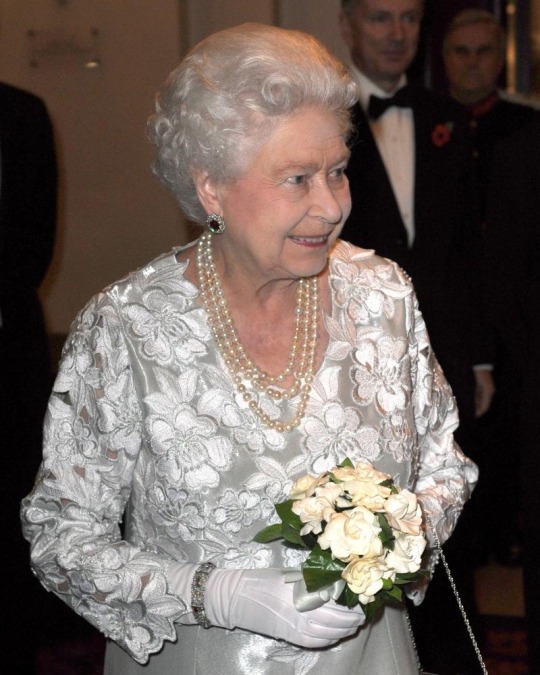
The queen wearing pearls at the Royal Opera House in 2012. Photograph: AFP/Getty Images
In 2012, Elizabeth II attended a gala festival at the Royal Opera House in London to celebrate her diamond jubilee. Photographs showed her wearing a multi-string pearl necklace with a ruby clasp.
Were these Ranjit Singh’s pearls? There was speculation they may have been, though Buckingham Palace was unable to confirm either way.
Queen Mary’s interest appears to have been prompted by curiosity about the origin of some of her pearls rather than any moral concern about the manner in which they were obtained. But a Buckingham Palace spokesperson said slavery and colonialism were matters that “his Majesty takes profoundly seriously”.
Shashi Tharoor, formerly an undersecretary at the United Nations, and currently an MP in India, said: “We have finally entered an era where colonial loot and pillage is being recognised for what it really was, rather than being dressed up as the incidental spoils of some noble ‘civilising mission’.
“As we are seeing increasingly, the return of stolen property is always a good thing. Generations to come will wonder why it took civilised nations so long to do the right thing.”
#abolish the monarchy#queen elizabeth ll#king charles the cruel#brf#colonialism#koh i noor#cost of the crown#the guardian#british royal family#imperialism
77 notes
·
View notes
Text
listening to a thing on the connaught rangers mutiny which was a regiment of irish soldiers stationed in jalandhar, punjab who declared mutiny from the british army after the massacre in amritsar that was carried out by a pro-empire irish governor and officer as well as the easter uprising and subsequent rampages of the black and tans in 1920 in ireland. they recognized that what they were doing in india and to indian people was similar to what the black and tans were doing to the irish people and they could no longer support the empire or the king of england, and most of them were imprisoned and their leader james daly was executed by firing squad.
being both punjabi and irish its hard to reconcile my ancestry sometimes especially knowing the role that many irish people played in british imperialism outside of europe (including the unfortunate pro-empire beliefs of my own irish ancestors whom i've met lol) so learning about this specific instance of solidarity among both sides of my ancestors feels quite personal in a way that i can't fully articulate
53 notes
·
View notes
Text
What is Islamic Architecture?
Islamic Architecture is an architectural style that dominates Muslim-majority countries around the world such as Indonesia, Pakistan, Egypt, Saudi Arabia, Turkey and many more, but is not limited to these locations. Islamic architecture can be found across the globe - though the architecture in other locations may not hold all the main characteristics - there are definite elements that have been incorporated into the western, modern world, (The Spruce., 2022).
This architectural style is associated with the religion of Islam, and has evolved from various other architectural styles like that of Mesopotamian and Roman.
Islamic architecture has several characteristics that are recognisable to even the untrained eye; the use of colour, geometric shapes, symmetry, patterns and calligraphy define the architectural style (Invaluable., 2020). This style of architecture is typically associated with religious establishments in Islam such as the Mosque, but is not restricted to this, the style extends to palaces, tombs, forts and public buildings. One of the oldest elements to identifying Islamic architecture is the presence of Minarets and domes. Minarets are tower-like structures with small windows and enclosed spiral staircases made for muezzins (a man who calls Muslims to pray) to call to worshippers from a high point. The minarets often feature one or more balconies. The forms of the minarets commonly seen range from thick, squat, spiral ramps to soaring, delicate, pencil-thin spires, with the base usually being square in shape. The number of minarets located in a Mosque will vary from one to six and they stand as landmarks of Islam.
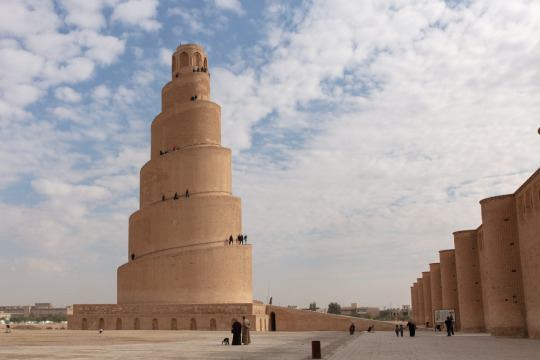
Grand Mosque of Samarra and the spiralling Malwiya Minaret (Adventures of Nicole., 2022).
Domes (like several other architectural movements such as Renaissance and Byzantine) are also a regular feature of islamic architecture.
The first Islamic design featuring a dome is a 7th century shrine in Jerusalem - Dome of the Rock, Arabic Qubbat al-Ṣakhrah. Dome of the Rock was built by Umayyad caliph (chief Muslim civil and religious ruler of the first Muslim dynasty) 'Abd al-Malik ibn Marwān. The structure is situated on a flat elevated plaza known to Muslims as 'The Noble Sanctuary' (al-Haram al-Sharīf), and the rock above which the dome is located is the spot the propet Muhammad was taken up into heaven for an encounter with God (Mi'rāj), (Britannica., 2014).
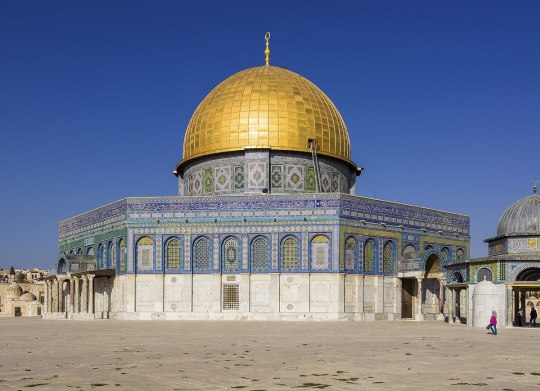
Dome of the Rock, Jerusalem, 691-692 CE.
Most domes rest on pendentives which are constructional devices used to place circular domes over square or rectangular shaped rooms. You can recognise pendentives as Islamic architecture by its decorative tiles or muqarnas - a form of ornamental vaulting, (IvyPanda.,2020).
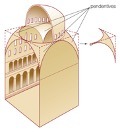
Diagram of pendentives.
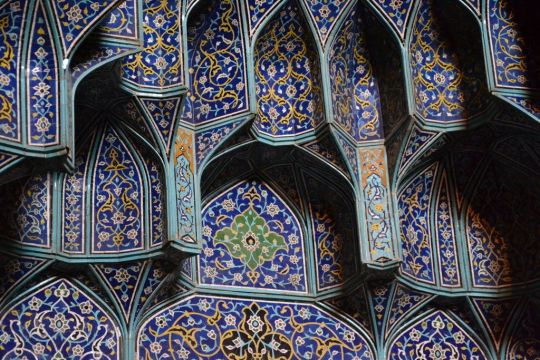
Muqarnas and decorative tiles example.
The most important piece of indo-Islamic architecture os the tomb of the Shah Rukn-i-Alam in Multan. This tomb was built between 1320 and 1324 CE by Giyath al-Din Tughluq in the pre-mughal, architectural style, Giyath was the governor of Diplapor (a city in the Okara District of the Punjab, Pakistan) and is thought to have been built to serve as a tomb for himself. However, it was presented to the family of the renowned Sufi saint Sheikh Rukn-ud-Din Abul Fateh (Sacred Sites., 2020). The tomb is an octagonal shape, 35m high and structured by red brick with a visible frame of beams and shisam wood, and further designed with the use of carved brick, wood blue and white faience mosaic tiles with raised relief patterns. The octagon is decorated with geometric, floral, and arabesque designs and calligraphic motifs. The interior was originally plastered but is now bare and the sarcophagus is surrounded by 72 of his descendants. The saint is still held in high esteem and the tomb is the focus of over 100,000 pilgrims from all over South Asia who visit in order to commemorate his memory, (Unesco., 2004).
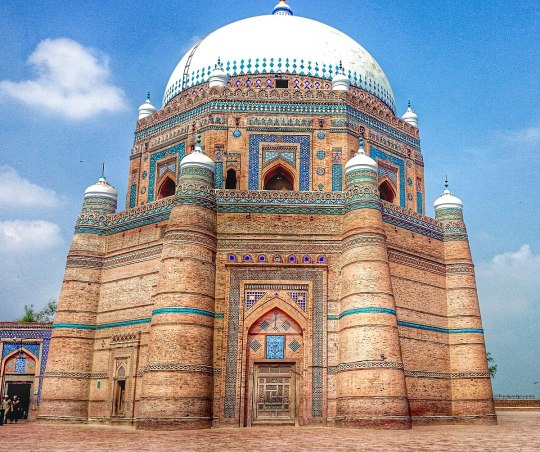
Shah Rukn-i-Alam, Multan, Pakistan.
Arches are yet another prominent feature of identifying Islamic architecture, and their placements usually define the entrances to buildings and rooms. There are several types of arches including: Pointed Arches, Ogee Arches, Horseshoe Arches, and Multifoil Arches. The double arched system of the Mosque-Cathedral of Córdoba, the pointed arches of the Al-Aqsa masque provide excellent examples of how arches become indispensable features of Islamic architecture (Rethinking the Future., 2023).

Double Arches of Mosque-Cathedral of Córdoba
The majority of mosques and palaces falling under the style of Islamic architecture feature courtyards and can house large gatherings of people during festive occasions and prayers. The courtyards will feature fountains for the people to perform ablution before prayers.
Now that there has been an introduction into what it takes to create for Islamic styled architecture, the rest of the blog is open to deeper dives of certain establishments, countries, and architects themselves,
Thank you for reading, I hope you enjoyed!
Summer Marshall-Miller
BIBLIOGRAPHY: Hohenadel, K. (2022) The Spruce. Available at: https://www.thespruce.com/what-is-islamic-architecture-5120474 (Accessed 20 January, 2023)
Britannica, The Editors of Encyclopaedia. (2014) Encyclopaedia Britannica. Available at: https://www.britannica.com/topic/mosque (Accessed: 20 January, 2023)
Unknown Author (2020) Invaluable. Available at: https://www.invaluable.com/blog/islamic-art-patterns/ (Accessed: 21 January, 2023)
IvyPanda (2020) 'Muqarnas in Islamic Architecture'. Available at: https://ivypanda.com/essays/muqarnas-in-islamic-architecture/ (Accessed: 24 January 2023)
UNESCO (2004) Tomb of Shah Rukn-e-Alam. Available at:https://whc.unesco.org/en/tentativelists/1884/#:~:text=The%20tomb%20of%20Shah%20Rukn,saint%20following%20the%20latter%27s%20death (Accessed 7th December 2022).
Unknown Author (2023) Rethinking the Future. Available at: https://www.re-thinkingthefuture.com/architectural-styles/a2589-10-distinctive-elements-of-islamic-architecture/ (Accessed: 23 January 2023).
Nicole Smoot (2022) The Adventures of Nicole. Available at: https://adventuresoflilnicki.com/samarra-iraq/ (Accessed: 23 January 2023).
#architecture#islamicarchitecture#art#history of art#islamic#mosque#history#my blogs#student#major project
33 notes
·
View notes
Text
Context: Indian government has decided to begin weather forecasts for regions under Pakistan-occupied Kashmir (PoK) — Gilgit-Baltistan, Muzaffarabad and Mirpur.
After DD and AIR started airing weather forecasts from PoK regions, In return Radio Pakistan also featured updates from Srinagar, Pulwama and Ladakh.
What’s the issue?
The ‘weather war’ — a diplomatic move by India — started after Pakistan’s Supreme Court issued notices to the advocate general of Gilgit-Baltistan in late April, directing them to amend the Gilgit-Baltistan Order-2018 and establish a caretaker government there.
About PoK:
Pakistan Occupied Kashmir (PoK) is that part of the Jammu and Kashmir (India) which was invaded by Pakistan in 1947. The region is referred by the United Nations and other international organizations, as ‘Pakistani-controlled Kashmir’ (or Pakistan Administered Kashmir) and it was re-named as ‘Pakistan occupied Jammu-Kashmir’ by the Modi government.
PoK divided into two parts:
Azad Jammu and Kashmir (AJK)
Gilgit-Baltistan (referred to as the ‘Northern Areas’ till August 2009).
What is the root of the fight between India and Pakistan?
The fact that PoK is an integral part of India has been our consistent policy ever since 1947.
In 1947, Pakistan’s Pashtoon tribals attacked Jammu and Kashmir.
So to tackle this critical situation the Ruler of that time Maharaja Hari Singh of Jammu and Kashmir sought military assistance from the Indian government and the then Indian Governor General Mountbatten signed an agreement on 26 October 1947 in which three subjects Defense, Foreign Affairs and Communications were handed over to India.
Except these subjects Jammu and Kashmir was free to all its decisions.
On the basis of this accession of treaty, the Government of India claims that India has the full right to interfere in the matters related to Jammu and Kashmir. Pakistan on the other hand doesn’t agree with India.
Why is PoK important?
Because of its location, PoK is of immense strategic importance. It shares borders with several countries – the Punjab and North-West Frontier Province provinces (now called Khyber-Pakhthunkhwa) in Pakistan to the west, the Wakhan Corridor of Afghanistan in the north-west, Xinjiang province of the People’s Republic of China to the north and India’s Jammu and Kashmir to the east.
Challenges for India in PoK region:
Terrorist infiltration through the region is high.
Pakistan has changed the demography of PoK over a period of time.
It has settled ex- servicemen, Punjabi’s and Pathans so the original colours of PoK has changed.
Gilgit Baltistan region is easy as compared to other.
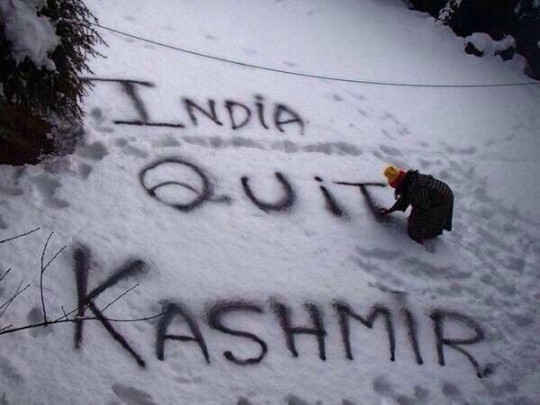
#india gdp latest news#indian#tumblog#tumbloadr#illustrators on tumblr#illustration#dailymail#lgbtq#news#world news#pok#pakistan#economy#viral stories#february 2023
3 notes
·
View notes
Photo


On 20th November 1863 James Bruce, 8th Lord Elgin, the Scottish Liberal statesman and diplomat, died.
James Bruce was born in London, his father, the 7th Earl was a controversial figure due to his involvement in the “procurement/theft” of the Parthenon Marbles, to give them their traditional name, you might know them as The Elgin Marbles, anyway I digress again, back to the 8th Earl.
In 1840, following the death of his elder brother, he became the heir to the earldom and in 1841, on the death of his father, succeeded to the title, becoming the eighth earl of Elgin. That same year he was elected Southampton's representative in the House of Commons, but his new earldom brought an end to his parliamentary career. In 1842, he accepted the nomination for governor of Jamaica. During an administration of four years he succeeded in winning the respect of all[. He improved the condition of the Afro-Caribbean workers, and conciliated the white planters by working through them. He remained in this post until 1847. His successful administration led to him being offered the role of governor general in British North America, which he fulfilled between 1847 and 1854. During his time there, Elgin took the first steps in establishing a “responsible government” in Canada.
This led to him becoming the first Canadian governor to distance himself from legislative affairs, leaving the real power of government to the elected representatives of the people and paving the way for the Canadian general governorship's essentially symbolic role today.
In 1857 as High Commissioner to China. While visiting China and Japan in 1858 and 1859, he oversaw the end of the Second Opium War but in doing so he ordered the destruction of the Old Summer Palace (the ruling Qing dynasty's residence and seat of government), near Peking (today Beijing),destroying thousands of priceless works of art, in order to intimidate the emperor and force him to sign an unratified treaty. Troops hurriedly looted the imperial collections in the palace, before the Old Summer Palace finished burning. The treaty ended up with China being forced to cede what became Hong Kong, to Britain in “perpetuity“
According to historian Olive Checkland, Lord Elgin "was ambivalent about the British imperial policy of forcing trade on the peoples in China and Japan. He deplored what he called the 'commercial ruffianism' which effectively determined British policy responses."
In a letter to his wife, in regard to the bombing of Canton, he wrote, "I never felt so ashamed of myself in my life."
It all leaves a bad taste in my mouth I deplore the British Empire and all it’s sins it inflicted on the world.
He subsequently became postmaster-general in the Palmerston cabinet and in 1862 was made viceroy of India. He died in He subsequently became postmaster-general in the Palmerston cabinet and in 1862 was made viceroy of India.
He died in Dharmsalas, Punjab of a heart attack while crossing a swinging rope on this day 1863, while still in office, he is buried in the churchyard of St. John in the Wilderness in Dharamshala. Bruce's legacy is several areas of Canada and India have the names Elgin or Bruce, he also has a bridge ion Singapore and a street in Victoria, Australia, and Hong Kong named after him.
While China has opened up to French relations, the sale of Chinese art and artifacts in British auctions remains a point of tension between London and Beijing. All zodiac animal heads from the Summer Palace that have been found have returned to Chinese museums, however.
6 notes
·
View notes
Text
Kataria distributes prizes to winning teams of "National Group Song Competition"
Chandigarh Governor Punjab and Administrator Union Territory Chandigarh, Sh. Gulab Chand Kataria distributed prizes to the winning teams of “National Group Song Competition”. Under the Sanskar Projects, Bharat Vikas Parishad Chandigarh organized its annual program of patriotic and national love songs in Hindi and Sanskrit, “National Group Song Competition” on 8 November at Lakshmibai Mahila…
0 notes
Text
मुख्यमंत्री मान ने राज्यपाल पुरोहित को लिखी चिट्ठी; कहा-राज्यों का तालमेल गड़बड़ा सकता है | Punjab Chief Minister Bhagwant Mann and Governor Banwari Lal Purohit latest news on Chandigarh SSP post
मुख्यमंत्री मान ने राज्यपाल पुरोहित को लिखी चिट्ठी; कहा-राज्यों का तालमेल गड़बड़ा सकता है | Punjab Chief Minister Bhagwant Mann and Governor Banwari Lal Purohit latest news on Chandigarh SSP post
Hindi News Local Chandigarh Punjab Chief Minister Bhagwant Mann And Governor Banwari Lal Purohit Latest News On Chandigarh SSP Post चंडीगढ़23 मिनट पहले कॉपी लिंक पंजाब के मुख्यमंत्री भगवंत मान। चंडीगढ़ के SSP कुलदीप सिंह चहल को उनका 3 साल का कार्यकाल पूरा होने से पहले ही हटाए जाने का मुद्दा गर्माया हुआ है। वही अब पंजाब के मुख्यमंत्री भगवंत मान ने पंजाब के राज्यपाल और चंडीगढ़ के प्रशासक बीएल…

View On WordPress
#Chandigarh Bhaskar News#Chandigarh Breaking News#Chandigarh Latest News#Punjab CM Bhagwant Mann News#Punjab Governor Banwari Lal Purohit News#SSP Chandigarh News#SSP Kuldeep Singh Chehal
0 notes